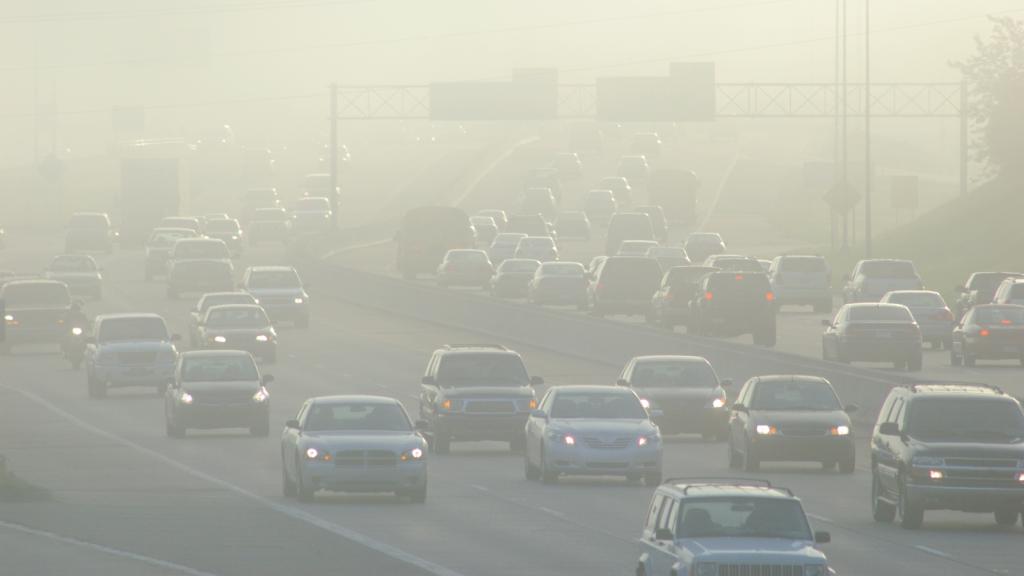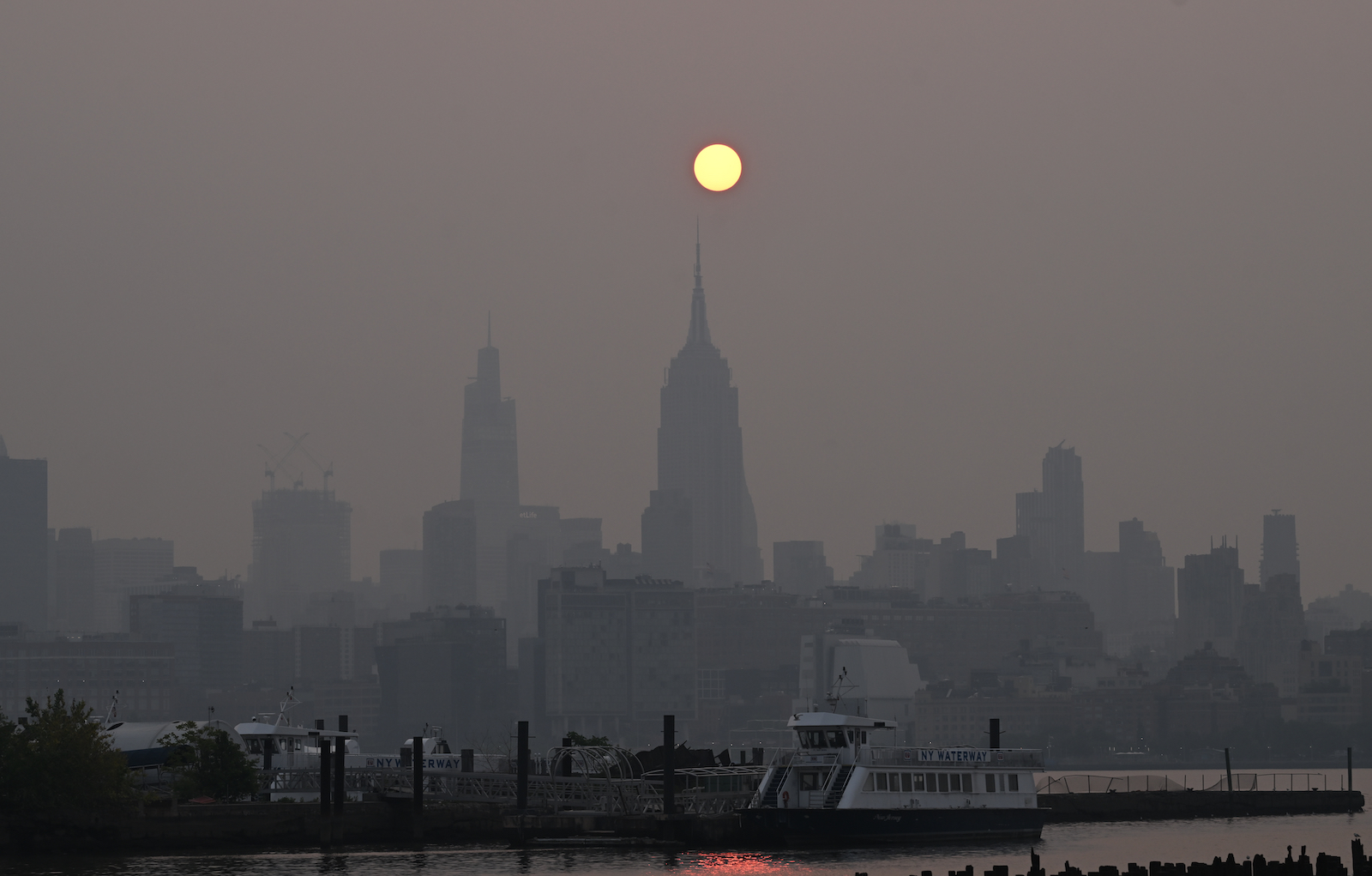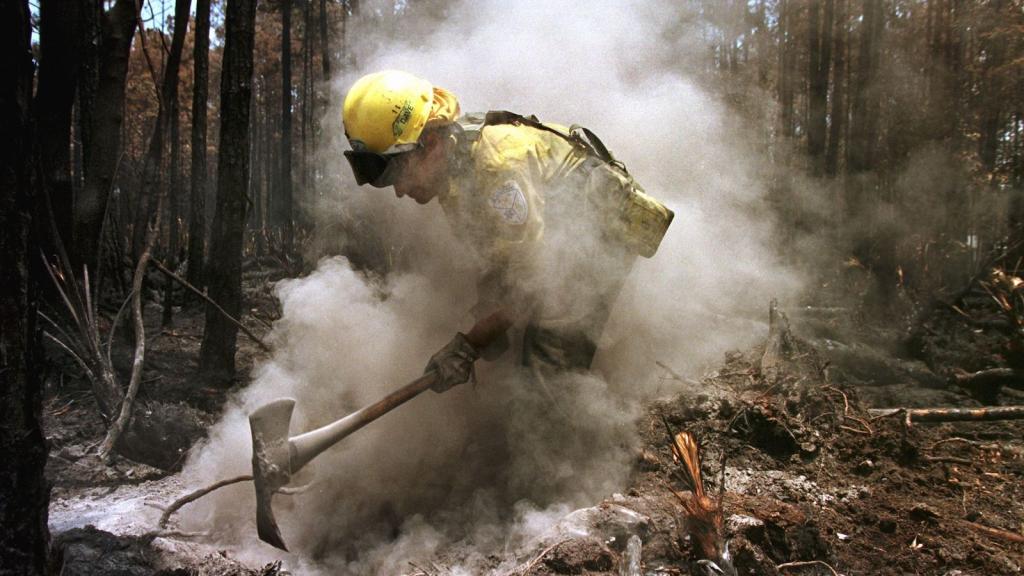Dangerous smoke from Canadian wildfires is now affecting more than 55 million people in the eastern United States and beyond, rendering New York City as the home of some of the world’s worst air quality by Wednesday afternoon.
The city’s air quality numbers soared past 400, a record-breaking number, according to the U.S. Air Quality Index, a program with the Environmental Protection Agency, or EPA. The thick haze has grounded planes and halted school activities, and the EPA is telling people to reschedule non-essential outdoor related activities and to wear N95 masks. Cloth masks will not prevent air particulates from wildfire smoke from entering the nose and mouth.
The smoke from the wildfires already has hit Midwestern states such as Minnesota and Wisconsin and is on its way as far south as South Carolina. The pall has also reached Washington D.C., where a code red air quality alert is in place.
For more than six weeks Canada has been decimated by wildfires which have burned more than 3.3 million hectares of land, more than 8 million acres. According to the EPA, the smoke will be around for the next few days in the eastern U.S. states but is subject to change depending on fire outbreaks and weather patterns. As of now, some areas in the Northeast and Midwest are experiencing air quality numbers in the 151 to 300 which ranges from unhealthy to hazardous.
The Air Quality Index (AQI) measures the level of fine particle pollution in the air, which includes a mixture of solids and liquid droplets. As of now, the severe drop in air quality comes as more than 400 wildfires continue to burn across Canada in what Jen Beverly, an assistant professor in wildlife fire at the University of Alberta calls “the worst fire season the country has ever seen.”
With unprecedented dry conditions due to climate change, Beverly said the lack of moisture in the ground fires are burning deeper in the earth as the blazes rage. From British Columbia to Quebec, the wildfires have caused the displacement of thousands of Canadians and now, the smoke from the fires is knocking on the doors of the U.S.
Inhaling toxic smoke and ash from wildfires could cause damage to the body and can cause lung inflammation which could make it harder to remove inhaled foreign materials and bacteria, potentially increasing the susceptibility to respiratory infections, according to the Centers for Disease Control and Prevention.
According to the EPA, a particulate matter known as PM2.5, which is 30 times smaller in diameter than a human hair, is of particular concern as the wildfire smoke travels. Unable to be seen by the human eye, the particles are so small that they can easily enter the nose and throat and can travel to the lungs, with the possibility of the smallest particles entering in the bloodstream.
PM2.5 can cause less serious short-term health effects, including irritation of the nose, throat, and eyes, coughing, sneezing, and shortness of breath. However, exposure for even just a few days can trigger bronchitis, heart failure, strokes, and lung infections and worsen conditions such as asthma and heart disease.
Smoke from wildfires in Canada has been moving south into the U.S. since May, as the unprecedented spring fire season launched a fierce and fiery start to the summer season.
“This year seems different. It’s a reminder of just how uncertain the times are. We can’t rely on what has happened previously; we know the climate is changing. We know we are dealing with a situation that is quite uncertain,” Beverly said. “You can’t predict how the fire season will play out. It’s not about predicting in my mind. We need to shift on preparing. If you’ve got fuel, you’ve got a fire.”



